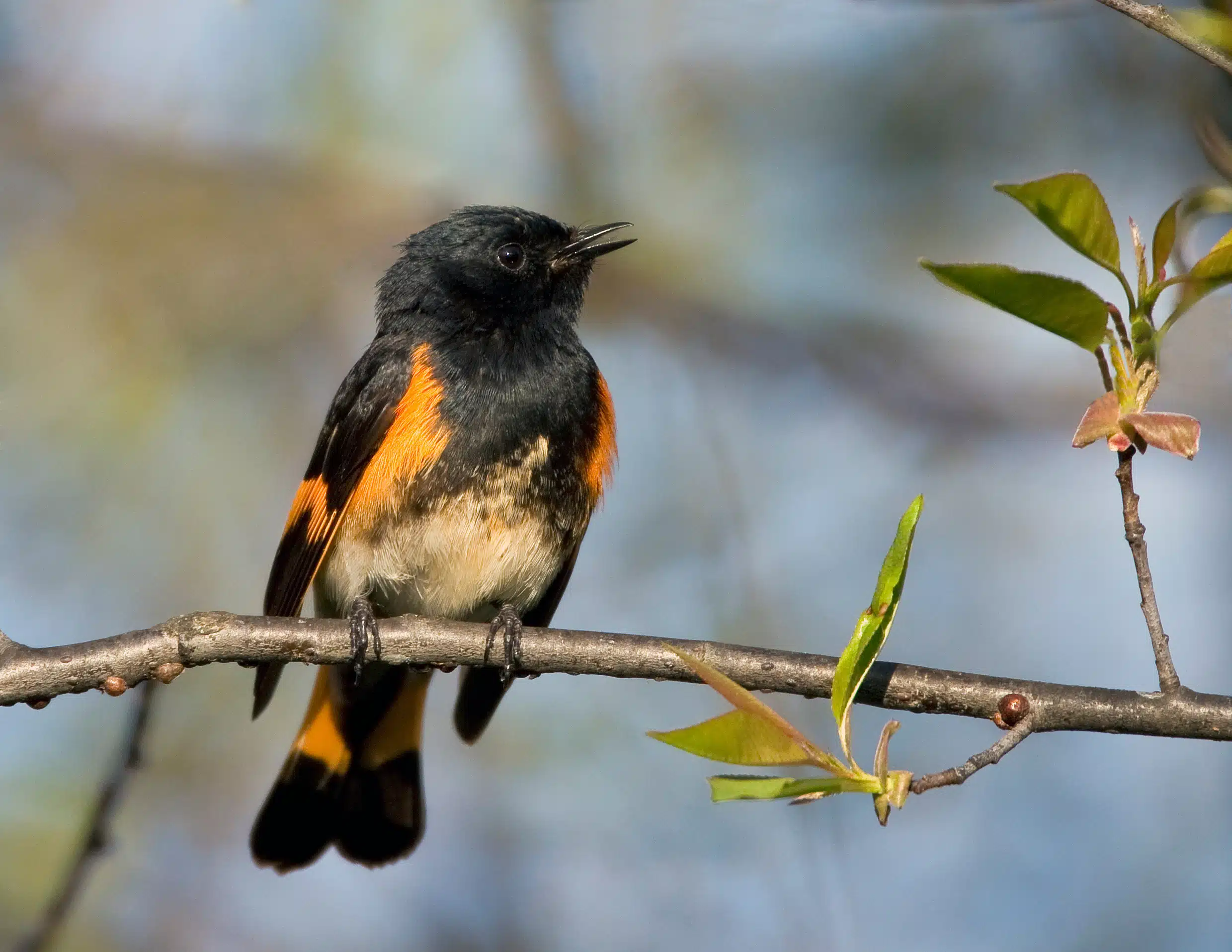Successful Bird Migration: Timing IS Everything
The success of each year’s spring migration comes down to timing—and climate change is tampering with the clock.
Climate change is having a direct effect on the availability of food sources (predominantly insects) from the beginning to the end of the migration route. This nourishment is necessary to fuel the flight of thousands of miles and for the migrating birds’ recovery to take on the tasks of nest building and raising young.
The additional time taken for birds to forage for insects in disrupted home ecosystems (caused by drought, flood and other environmental factors) means a late arrival to the breeding grounds. With warming temperatures in the north, insects and plants are emerging earlier, throwing off the timing of when they are most plentiful for avian foraging. Since the 1990s, migratory birds have been arriving in North America in the springtime about two days earlier each decade. Unfortunately, somewhat earlier arrivals are not keeping pace with the speed of human-caused climate change.
Researchers from Cornell University, the University of Maryland, and Georgetown University have published a study in Ecology magazine that reveals birds can partially compensate for these changes by shortening migration time by flying faster and making fewer or shorter stopovers to refuel along the way. Based on the American Redstart, the study noted that some birds can recover about 60% of the lost time, but that means still arriving late on the breeding grounds. One finding pointed to a drop of more than 6% in the Redstart’s overall survival rate.
The statistics aren’t encouraging, but individuals and organizations are working to combat climate change’s effects on bird migration.
This year’s World Migratory Bird Day (WMBD), to be celebrated on May 11, is focusing on the importance of insects as essential food sources for migratory birds. The theme is titled Protect Insects, Protect Birds.
The global event WMBD is held through the efforts of Environment for the Americas (EFTA)— a non-profit organization that connects people to bird conservation through education and research, the Convention on Migratory Species (CMS), and the Agreement on the Conservation of African-Eurasian Migratory Waterbirds (AEWA).
How to Help
This year, peak migration in Wisconsin will occur May 15-21, with more than 300 species of birds visiting the state. The following are suggestions for how you can protect birds’ primary food source and help them on their journey:
- Maintain trees, shrubs, grasses, and flowers that are native to your area. These species benefit more pollinators and other beneficial species than non-native plant species.
- Mow your lawn less in early spring to allow flowers to bloom and help early season pollinators. This vegetation can provide essential food sources, offer shelter, and nesting sites for a wide variety of species, including pollinators and other beneficial insects birds eat!
- Discontinue using pesticides and herbicides, which kill or harm the insects and plants that wildlife depend on for food.
- Convert your lawn or part of your lawn (which has limited value for insect production) to a native plant garden. Aiming for 70% native plants is a good rule of thumb.
- If you own a rural property, encourage fencerows, un-mowed ditches, and natural areas as insect nurseries.
- If you live in an apartment, set out a pot of native plants to help feed insects that help feed birds.
- Support the protection and restoration of habitats such as woodlands, wetlands, and native meadows where insects live and breed.
- Birds migrate primarily at night. Reduce building collisions by keeping artificial lights off between dawn and dusk during fall and spring migration seasons. Artificial lighting can also drastically affect the behavior of insects and pollinators, reducing the ability of plants to produce fruit and reproduce. During the day, birds can’t identify windows as barriers. Put up stickers on the outside of windows or hang string to alert them.
Bird Migration Benefits All
The migration of birds helps control insect populations in whatever part of the world they happen to visit, and certain smaller species also aid in flower pollination. In addition, their droppings also provide rich nutrients that help plants to grow.
Enjoy the View
One of the best spots to see migratory birds in Door County is the Kangaroo Lake Nature Preserve.


